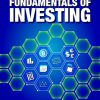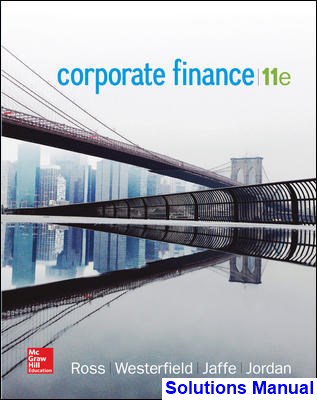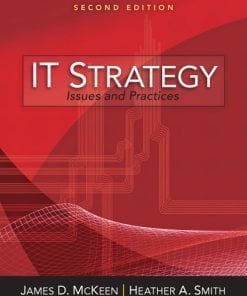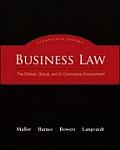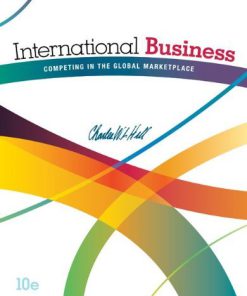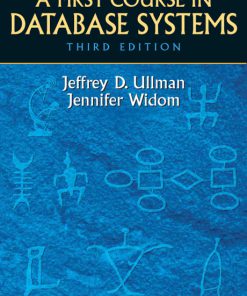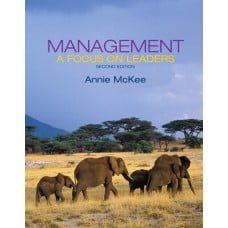Corporate Finance 11th Edition Ross Solutions Manual
$35.00 Original price was: $35.00.$26.50Current price is: $26.50.
Corporate Finance 11th Edition Ross Solutions Manual
Corporate Finance 11th Edition Ross Solutions Manual
Product details:
- ISBN-10 : 9780077861759
- ISBN-13 : 978-0077861759
- Author: Bradford D. Jordan, Randolph W. Westerfield, Stephen A. Ross
Corporate Finance, by Ross, Westerfield, Jaffe, and Jordan emphasizes the modern fundamentals of the theory of finance, while providing contemporary examples to make the theory come to life. The authors aim to present corporate finance as the working of a small number of integrated and powerful intuitions, rather than a collection of unrelated topics. They develop the central concepts of modern finance: arbitrage, net present value, efficient markets, agency theory, options, and the trade-off between risk and return, and use them to explain corporate finance with a balance of theory and application. The Eleventh Edition includes many exciting new research findings as well as an enhanced Connect Finance, now with even more student learning resources.
Connect is proven to deliver better results for students and instructors. Proven content integrates seamlessly with enhanced digital tools to create a personalized learning experience that provides students with precisely what they need, when they need it. With Connect, the educational possibilities are limitless.
Table of contents:
- Part One: Overview of Financial Management
- 1 Introduction to Financial Management
- 1.1 Finance: A Quick Look
- The Five Basic Areas
- Corporate Finance
- Investments
- Financial Institutions
- International Finance
- Fintech
- Why Study Finance?
- Marketing and Finance
- Accounting and Finance
- Management and Finance
- Technology and Finance
- You and Finance
- 1.2 Business Finance and the Financial Manager
- What Is Business Finance?
- The Financial Manager
- Financial Management Decisions
- Capital Budgeting
- Capital Structure
- Working Capital Management
- Conclusion
- 1.3 Forms of Business Organization
- Sole Proprietorship
- Partnership
- Corporation
- A Corporation by Another Name . . .
- Benefit Corporation
- 1.4 The Goal of Financial Management
- Profit Maximization
- The Goal of Financial Management in a Corporation
- A More General Financial Management Goal
- Sarbanes-Oxley Act
- 1.5 The Agency Problem and Control of the Corporation
- Agency Relationships
- Management Goals
- Do Managers Act in the Stockholders’ Interests?
- Managerial Compensation
- Control of the Firm
- Conclusion
- Stakeholders
- 1.6 Financial Markets and the Corporation
- Cash Flows to and from the Firm
- Primary versus Secondary Markets
- Primary Markets
- Secondary Markets
- Summary and Conclusions
- Critical Thinking and Concepts Review
- What’s on the Web?
- Chapter Case: The McGee Cake Company
- Part Two: Understanding Financial Statements and Cash Flow
- 2 Financial Statements, Taxes, and Cash Flow
- 2.1 The Balance Sheet
- Assets: The Left-Hand Side
- Liabilities and Owners’ Equity: The Right-Hand Side
- Net Working Capital
- Liquidity
- Debt versus Equity
- Market Value versus Book Value
- 2.2 The Income Statement
- GAAP and the Income Statement
- Noncash Items
- Time and Costs
- Earnings Management
- 2.3 Taxes
- Corporate Tax Rates
- Average versus Marginal Tax Rates
- 2.4 Cash Flow
- Cash Flow from Assets
- Operating Cash Flow
- Capital Spending
- Change in Net Working Capital
- Conclusion
- A Note on “Free” Cash Flow
- Cash Flow to Creditors and Stockholders
- Cash Flow to Creditors
- Cash Flow to Stockholders
- Conclusion
- An Example: Cash Flows for Dole Cola
- Operating Cash Flow
- Net Capital Spending
- Change in NWC and Cash Flow from Assets
- Cash Flow to Creditors and Stockholders
- Summary and Conclusions
- Chapter Review and Self-Test Problem
- Answer to Chapter Review and Self-Test Problem
- Critical Thinking and Concepts Review
- Questions and Problems
- What’s on the Web?
- Excel Master It! Problem
- Chapter Case: Cash Flows and Financial Statements at Sunset Boards, Inc.
- 3 Working with Financial Statements
- 3.1 Standardized Financial Statements
- Common-Size Balance Sheets
- Common-Size Income Statements
- 3.2 Ratio Analysis
- Short-Term Solvency, or Liquidity, Measures
- Current Ratio
- Quick (or Acid-Test) Ratio
- Cash Ratio
- Long-Term Solvency Measures
- Total Debt Ratio
- Times Interest Earned
- Cash Coverage
- Asset Management, or Turnover, Measures
- Inventory Turnover and Days’ Sales in Inventory
- Receivables Turnover and Days’ Sales in Receivables
- Total Asset Turnover
- Profitability Measures
- Profit Margin
- Return on Assets
- Return on Equity
- Market Value Measures
- Price-Earnings Ratio
- Price-Sales Ratio
- Market-to-Book Ratio
- Enterprise Value-EBITDA Ratio
- 3.3 The DuPont Identity
- An Expanded DuPont Analysis
- 3.4 Internal and Sustainable Growth
- Dividend Payout and Earnings Retention
- ROA, ROE, and Growth
- The Internal Growth Rate
- The Sustainable Growth Rate
- Determinants of Growth
- A Note on Sustainable Growth Rate Calculations
- 3.5 Using Financial Statement Information
- Why Evaluate Financial Statements?
- Internal Uses
- External Uses
- Choosing a Benchmark
- Time-Trend Analysis
- Peer Group Analysis
- Problems with Financial Statement Analysis
- Summary and Conclusions
- Chapter Review and Self-Test Problems
- Answers to Chapter Review and Self-Test Problems
- Critical Thinking and Concepts Review
- Questions and Problems
- What’s on the Web?
- Excel Master It! Problem
- Chapter Case: Ratios and Financial Planning at S&S Air, Inc.
- Part Three: Valuation of Future Cash Flows
- 4 Introduction to Valuation: The Time Value of Money
- 4.1 Future Value and Compounding
- Investing for a Single Period
- Investing for More Than One Period
- 4.2 Present Value and Discounting
- The Single-Period Case
- Present Values for Multiple Periods
- 4.3 More on Present and Future Values
- Present versus Future Value
- Determining the Discount Rate
- Finding the Number of Periods
- Summary and Conclusions
- Chapter Review and Self-Test Problems
- Answers to Chapter Review and Self-Test Problems
- Critical Thinking and Concepts Review
- Questions and Problems
- What’s on the Web?
- Excel Master It! Problem
- 5 Discounted Cash Flow Valuation
- 5.1 Future and Present Values of Multiple Cash Flows
- Future Value with Multiple Cash Flows
- Present Value with Multiple Cash Flows
- A Note on Cash Flow Timing
- 5.2 Valuing Level Cash Flows: Annuities and Perpetuities
- Present Value for Annuity Cash Flows
- Annuity Tables
- Finding the Payment
- Finding the Rate
- Future Value for Annuities
- A Note on Annuities Due
- Perpetuities
- 5.3 Comparing Rates: The Effect of Compounding Periods
- Effective Annual Rates and Compounding
- Calculating and Comparing Effective Annual Rates
- EARs and APRs
- EARs, APRs, Financial Calculators, and Spreadsheets
- 5.4 Loan Types and Loan Amortization
- Pure Discount Loans
- Interest-Only Loans
- Amortized Loans
- Summary and Conclusions
- Chapter Review and Self-Test Problems
- Answers to Chapter Review and Self-Test Problems
- Critical Thinking and Concepts Review
- Questions and Problems
- What’s on the Web?
- Excel Master It! Problem
- Chapter Case: S&S Air’s Mortgage
- Part Four: Valuing Stocks and Bonds
- 6 Interest Rates and Bond Valuation
- 6.1 Bonds and Bond Valuation
- Bond Features and Prices
- Bond Values and Yields
- Interest Rate Risk
- Finding the Yield to Maturity: More Trial and Error
- 6.2 More on Bond Features
- Is It Debt or Equity?
- Long-Term Debt: The Basics
- The Indenture
- Terms of a Bond
- Security
- Seniority
- Repayment
- The Call Provision
- Protective Covenants
- 6.3 Bond Ratings
- 6.4 Some Different Types of Bonds
- Government Bonds
- Zero Coupon Bonds
- Floating-Rate Bonds
- Other Types of Bonds
- Sukuk
- 6.5 Bond Markets
- How Bonds Are Bought and Sold
- Bond Price Reporting
- A Note on Bond Price Quotes
- 6.6 Inflation and Interest Rates
- Real versus Nominal Rates
- The Fisher Effect
- 6.7 Determinants of Bond Yields
- The Term Structure of Interest Rates
- Bond Yields and the Yield Curve: Putting It All Together
- Conclusion
- Summary and Conclusions
- Chapter Review and Self-Test Problems
- Answers to Chapter Review and Self-Test Problems
- Critical Thinking and Concepts Review
- Questions and Problems
- What’s on the Web?
- Excel Master It! Problem
- Chapter Case: Financing S&S Air’s Expansion Plans with a Bond Issue
- 7 Equity Markets and Stock Valuation
- 7.1 Common Stock Valuation
- Cash Flows
- Some Special Cases
- Zero Growth
- Constant Growth
- Nonconstant Growth
- Components of the Required Return
- Stock Valuation Using Comparables, or Comps
- 7.2 Some Features of Common and Preferred Stock
- Common Stock Features
- Shareholder Rights.
- Proxy Voting
- Classes of Stock
- Other Rights
- Dividends
- Preferred Stock Features
- Stated Value
- Cumulative and Noncumulative Dividends
- Is Preferred Stock Really Debt?
- 7.3 The Stock Markets
- Dealers and Brokers
- Organization of the NYSE
- Members
- Operations
- Floor Activity
- Nasdaq Operations
- ECNs
- Stock Market Reporting
- Summary and Conclusions
- Chapter Review and Self-Test Problems
- Answers to Chapter Review and Self-Test Problems
- Critical Thinking and Concepts Review
- Questions and Problems
- What’s on the Web?
- Excel Master It! Problem
- Chapter Case: Stock Valuation at Ragan, Inc.
- Part Five: Capital Budgeting
- 8 Net Present Value and Other Investment Criteria
- 8.1 Net Present Value
- The Basic Idea
- Estimating Net Present Value
- 8.2 The Payback Rule
- Defining the Rule
- Analyzing the Rule
- Redeeming Qualities of the Rule
- Summary of the Rule
- 8.3 The Average Accounting Return
- 8.4 The Internal Rate Of Return
- Problems with the IRR
- Nonconventional Cash Flows
- Mutually Exclusive Investments
- Redeeming Qualities of the IRR
- The Modified Internal Rate of Return (MIRR)
- Method 1: The Discounting Approach
- Method 2: The Reinvestment Approach
- Method 3: The Combination Approach
- MIRR or IRR: Which Is Better?
- 8.5 The Profitability Index
- 8.6 The Practice Of Capital Budgeting
- Summary and Conclusions
- Chapter Review and Self-Test Problems
- Answers to Chapter Review and Self-Test Problems
- Critical Thinking and Concepts Review
- Questions and Problems
- What’s on the Web?
- Excel Master It! Problem
- Chapter Case: Bullock Gold Mining
- 9 Making Capital Investment Decisions
- 9.1 Project Cash Flows: A First Look
- Relevant Cash Flows
- The Stand-Alone Principle
- 9.2 Incremental Cash Flows
- Sunk Costs
- Opportunity Costs
- Side Effects
- Net Working Capital
- Financing Costs
- Other Issues
- 9.3 Pro Forma Financial Statements and Project Cash Flows
- Getting Started: Pro Forma Financial Statements
- Project Cash Flows
- Project Operating Cash Flow
- Project Net Working Capital and Capital Spending
- Projected Total Cash Flow and Value
- The Tax Shield Approach
- 9.4 More on Project Cash Flow
- A Closer Look at Net Working Capital
- Depreciation
- Modified ACRS (MACRS) Depreciation
- Bonus Depreciation
- Book Value versus Market Value
- An Example: The Majestic Mulch and Compost Company (MMCC)
- Operating Cash Flows
- Changes in NWC
- Capital Spending
- Total Cash Flow and Value
- Conclusion
- 9.5 Evaluating NPV Estimates
- The Basic Problem
- Forecasting Risk
- Sources of Value
- 9.6 Scenario and Other What-If Analyses
- Getting Started
- Scenario Analysis
- Sensitivity Analysis
- 9.7 ADDITIONAL CONSIDERATIONS IN CAPITAL BUDGETING
- Managerial Options and Capital Budgeting
- Contingency Planning
- Strategic Options
- Conclusion
- Capital Rationing
- Soft Rationing
- Hard Rationing
- Summary and Conclusions
- Chapter Review and Self-Test Problems
- Answers to Chapter Review and Self-Test Problems
- Critical Thinking and Concepts Review
- Questions and Problems
- Excel Master It! Problem
- Chapter Case: Conch Republic Electronics
- Part Six: Risk and Return
- 10 Some Lessons from Capital Market History
- 10.1 Returns
- Dollar Returns
- Percentage Returns
- 10.2 The Historical Record
- A First Look
- A Closer Look
- 10.3 Average Returns: The First Lesson
- Calculating Average Returns
- Average Returns: The Historical Record
- Risk Premiums
- The First Lesson
- 10.4 The Variability of Returns: The Second Lesson
- Frequency Distributions and Variability
- The Historical Variance and Standard Deviation
- The Historical Record
- Normal Distribution
- The Second Lesson
- 2008: The Bear Growled and Investors Howled
- Using Capital Market History
- More on the Stock Market Risk Premium
- 10.5 More on Average Returns
- Arithmetic versus Geometric Averages
- Calculating Geometric Average Returns
- Arithmetic Average Return or Geometric Average Return?
- 10.6 Capital Market Efficiency
- Price Behavior in an Efficient Market
- The Efficient Markets Hypothesis
- Some Common Misconceptions about the EMH
- The Forms of Market Efficiency
- Summary and Conclusions
- Chapter Review and Self-Test Problems
- Answers to Chapter Review and Self-Test Problems
- Critical Thinking and Concepts Review
- Questions and Problems
- What’s on the Web?
- Excel Master It! Problem
- Chapter Case: A Job at S&S Air
- 11 Risk and Return
- 11.1 Expected Returns and Variances
- Expected Return
- Calculating the Variance
- 11.2 Portfolios
- Portfolio Weights
- Portfolio Expected Returns
- Portfolio Variance
- 11.3 Announcements, Surprises, and Expected Returns
- Expected and Unexpected Returns
- Announcements and News
- 11.4 Risk: Systematic and Unsystematic
- Systematic and Unsystematic Risk
- Systematic and Unsystematic Components of Return
- 11.5 Diversification and Portfolio Risk
- The Effect of Diversification: Another Lesson from Market History
- The Principle of Diversification
- Diversification and Unsystematic Risk
- Diversification and Systematic Risk
- 11.6 Systematic Risk and Beta
- The Systematic Risk Principle
- Measuring Systematic Risk
- Portfolio Betas
- 11.7 The Security Market Line
- Beta and the Risk Premium
- The Reward-to-Risk Ratio
- The Basic Argument
- The Fundamental Result
- The Security Market Line
- Market Portfolios
- The Capital Asset Pricing Model
- 11.8 The SML and the Cost of Capital: a Preview
- The Basic Idea
- The Cost of Capital
- Summary and Conclusions
- Chapter Review and Self-Test Problems
- Answers to Chapter Review and Self-Test Problems
- Critical Thinking and Concepts Review
- Questions and Problems
- What’s on the Web?
- Excel Master It! Problem
- Chapter Case: The Beta for FLIR Systems
- Part Seven: Long-Term Financing
- 12 Cost of Capital
- 12.1 The Cost of Capital: Some Preliminaries
- Required Return versus Cost of Capital
- Financial Policy and Cost of Capital
- 12.2 The Cost of Equity
- The Dividend Growth Model Approach
- Implementing the Approach
- Estimating g
- Advantages and Disadvantages of the Approach
- The SML Approach
- Implementing the Approach
- Advantages and Disadvantages of the Approach
- 12.3 The Costs of Debt and Preferred Stock
- The Cost of Debt
- The Cost of Preferred Stock
- 12.4 The Weighted Average Cost of Capital
- The Capital Structure Weights
- Taxes and the Weighted Average Cost of Capital
- Solving the Warehouse Problem and Similar Capital Budgeting Problems
- Calculating the WACC for Eastman Chemical
- Eastman’s Cost of Equity
- Eastman’s Cost of Debt
- Eastman’s WACC
- 12.5 Divisional and Project Costs of Capital
- The SML and the WACC
- Divisional Cost of Capital
- The Pure Play Approach
- The Subjective Approach
- 12.6 Company Valuation With The WACC
- Summary and Conclusions
- Chapter Review and Self-Test Problems
- Answers to Chapter Review and Self-Test Problems
- Critical Thinking and Concepts Review
- Questions and Problems
- What’s on the Web?
- Excel Master It! Problem
- Chapter Case: Cost of Capital for Master Tools
- 13 Leverage and Capital Structure
- 13.1 The Capital Structure Question
- 13.2 The Effect of Financial Leverage
- The Impact of Financial Leverage
- Financial Leverage, EPS, and ROE: An Example
- EPS versus EBIT
- Corporate Borrowing and Homemade Leverage
- 13.3 Capital Structure and The Cost of Equity Capital
- M&M Proposition I: The Pie Model
- The Cost of Equity and Financial Leverage: M&M Proposition II
- Business and Financial Risk
- 13.4 Corporate Taxes and Capital Structure
- The Interest Tax Shield
- Taxes and M&M Proposition I
- Conclusion
- 13.5 Bankruptcy Costs
- Direct Bankruptcy Costs
- Indirect Bankruptcy Costs
- 13.6 Optimal Capital Structure
- The Static Theory of Capital Structure
- Optimal Capital Structure and the Cost of Capital
- Capital Structure: Some Managerial Recommendations
- Taxes
- Financial Distress
- 13.7 Observed Capital Structures
- 13.8 A Quick Look at The Bankruptcy Process
- Liquidation and Reorganization
- Bankruptcy Liquidation
- Bankruptcy Reorganization
- Financial Management and the Bankruptcy Process
- Agreements to Avoid Bankruptcy
- Summary and Conclusions
- Chapter Review and Self-Test Problems
- Answers to Chapter Review and Self-Test Problems
- Critical Thinking and Concepts Review
- Questions and Problems
- What’s on the Web?
- Excel Master It! Problem
- Chapter Case: Stephenson Real Estate Recapitalization
- 14 Dividends and Dividend Policy
- 14.1 Cash Dividends and Dividend Payment
- Cash Dividends
- Standard Method of Cash Dividend Payment
- Dividend Payment: A Chronology
- More on the Ex-Dividend Date
- 14.2 Does Dividend Policy Matter?
- An Illustration of the Irrelevance of Dividend Policy
- Current Policy: Dividends Set Equal to Cash Flow
- Alternative Policy: Initial Dividend Greater Than Cash Flow
- A Test
- Some Real-World Factors Favoring a Low Payout
- Taxes
- Flotation Costs
- Dividend Restrictions
- Some Real-World Factors Favoring a High Payout
- Desire for Current Income
- Tax and Legal Benefits from High Dividends
- Clientele Effects: A Resolution of Real-World Factors?
- 14.3 Stock Repurchases: An Alternative to Cash Dividends
- Cash Dividends versus Repurchase
- Real-World Considerations in a Repurchase
- Share Repurchase and EPS
- 14.4 What We Know And Do Not Know About Dividend and Payout Policies
- Dividends and Dividend Payers
- Corporations Smooth Dividends
- Putting It All Together
- Some Survey Evidence on Dividends
- 14.5 Stock Dividends and Stock Splits
- Value of Stock Splits and Stock Dividends
- The Benchmark Case
- Popular Trading Range
- Reverse Splits
- Summary and Conclusions
- Chapter Review and Self-Test Problems
- Answer to Chapter Review and Self-Test Problem
- Critical Thinking and Concepts Review
- Questions and Problems
- What’s on the Web?
- Chapter Case: Electronic Timing, Inc.
- 15 Raising Capital
- 15.1 The Financing Life Cycle of A Firm: Early-Stage Financing and Venture Capital
- Entrepreneurship
- Venture Capital
- Stages of Financing
- Some Venture Capital Realities
- Venture Capital Firms
- Crowdfunding
- Initial Coin Offerings
- Conclusion
- 15.2 Selling Securities to the Public: The Basic Procedure
- 15.3 Alternative Issue Methods
- 15.4 Underwriters
- Choosing an Underwriter
- Types of Underwriting
- Firm Commitment Underwriting
- Best Efforts Underwriting
- Dutch Auction Underwriting
- The Green Shoe Provision
- The Aftermarket
- Lockup Agreements
- The Quiet Period
- Direct Listing
- Special-purpose acquisition companies
- 15.5 IPOs and Underpricing
- Evidence on Underpricing
- IPO Underpricing: The 1999–2000 Experience
- The Partial Adjustment Phenomenon
- Why Does Underpricing Exist?
- 15.6 New Equity Sales and the Value of The Firm
- 15.7 The Cost of Issuing Securities
- 15.8 Issuing Long-Term Debt
- 15.9 Shelf Registration
- Summary and Conclusions
- Chapter Review and Self-Test Problems
- Answer to Chapter Review and Self-Test Problem
- Critical Thinking and Concepts Review
- Questions and Problems
- What’s on the Web?
- Chapter Case: S&S Air Goes Public
- Part Eight: Short-Term Financial Management
- 16 Short-Term Financial Planning
- 16.1 Tracing Cash and Net Working Capital
- 16.2 The Operating Cycle and the Cash Cycle
- Defining the Operating and Cash Cycles
- The Operating Cycle
- The Cash Cycle
- The Operating Cycle and the Firm’s Organizational Chart
- Calculating the Operating and Cash Cycles
- The Operating Cycle
- The Cash Cycle
- Interpreting the Cash Cycle
- 16.3 Some Aspects of Short-Term Financial Policy
- The Size of the Firm’s Investment in Current Assets
- Alternative Financing Policies for Current Assets
- Which Financing Policy Is Best?
- Current Assets and Liabilities in Practice
- 16.4 The Cash Budget
- Sales and Cash Collections
- Cash Outflows
- The Cash Balance
- 16.5 Short-Term Borrowing
- Unsecured Loans
- Secured Loans
- Accounts Receivable Financing
- Other Sources
- 16.6 A Short-Term Financial Plan
- Summary and Conclusions
- Chapter Review and Self-Test Problems
- Answers to Chapter Review and Self-Test Problems
- Critical Thinking and Concepts Review
- Questions and Problems
- What’s on the Web?
- Excel Master It! Problem
- Chapter Case: Piepkorn Manufacturing Working Capital Management, Part 1
- 17 Working Capital Management
- 17.1 Float and Cash Management
- Reasons for Holding Cash
- The Speculative and Precautionary Motives
- The Transaction Motive
- Benefits of Holding Cash
- Understanding Float
- Disbursement Float
- Collection Float and Net Float
- Float Management
- Ethical and Legal Questions
- Electronic Data Interchange and Check 21: The End of Float?
- 17.2 Cash Management: Collection, Disbursement, and Investment
- Cash Collection and Concentration
- Components of Collection Time
- Cash Collection
- Lockboxes
- Cash Concentration
- Managing Cash Disbursements
- Increasing Disbursement Float
- Controlling Disbursements
- Investing Idle Cash
- Temporary Cash Surpluses
- Characteristics of Short-Term Securities
- Some Different Types of Money Market Securities
- 17.3 Credit and Receivables
- Components of Credit Policy
- Terms of Sale
- The Basic Form
- The Credit Period
- Cash Discounts
- Optimal Credit Policy
- The Total Credit Cost Curve
- Organizing the Credit Function
- Credit Analysis
- Credit Information
- Credit Evaluation and Scoring
- Collection Policy
- Monitoring Receivables
- Collection Effort
- 17.4 Inventory Management
- The Financial Manager and Inventory Policy
- Inventory Types
- Inventory Costs
- 17.5 Inventory Management Techniques
- The ABC Approach
- The Economic Order Quantity Model
- Inventory Depletion
- Carrying Costs
- Shortage Costs
- Total Costs
- Extensions to the EOQ Model
- Safety Stocks
- Reorder Points
- Managing Derived-Demand Inventories
- Materials Requirements Planning
- Just-in-Time Inventory
- Summary and Conclusions
- Chapter Review and Self-Test Problems
- Answers to Chapter Review and Self-Test Problems
- Critical Thinking and Concepts Review
- Questions and Problems
- What’s on the Web?
- Chapter Case: Piepkorn Manufacturing Working Capital Management, Part 2
- Part Nine: Topics in Business Finance
- 18 International Aspects of Financial Management
- 18.1 TERMINOLOGY
- 18.2 FOREIGN EXCHANGE MARKETS AND EXCHANGE RATES
- Exchange Rates
- Exchange Rate Quotations
- Cross-Rates and Triangle Arbitrage
- Types of Transactions
- 18.3 PURCHASING POWER PARITY
- Absolute Purchasing Power Parity
- Relative Purchasing Power Parity
- The Basic Idea
- The Result
- Currency Appreciation and Depreciation
- 18.4 EXCHANGE RATES AND INTEREST RATES
- Covered Interest Arbitrage
- Interest Rate Parity
- 18.5 EXCHANGE RATE RISK
- Short-Run Exposure
- Long-Run Exposure
- Translation Exposure
- Managing Exchange Rate Risk
- 18.6 POLITICAL RISK
- The Tax Cuts and Jobs Act
- Managing Political Risk
- Summary and Conclusions
- Chapter Review and Self-Test Problems
- Answers to Chapter Review and Self-Test Problems
- Critical Thinking and Concepts Review
- Questions and Problems
- What’s on the Web?
- Excel Master It! Problem
- Chapter Case: S&S Air Goes International
- Appendix A: Mathematical Tables
- Appendix B: Key Equations
- Appendix C: Answers to Selected End-of-Chapter Problems
- Appendix D: Using the HP-10B and TI BA II Plus Financial Calculators
- Glossary
- Name Index
- Subject Index
People also search:
fundamentals of corporate finance 11th edition author stephen a. ross
corporate finance stephen ross 11th edition
Related products
Solution Manual
Solution Manual for Introduction to Robotics Mechanics and Control 3rd Edition by Craig
Solution Manual
Solution Manual
International Business Competing in the Global Marketplace Hill 10th Edition Solutions Manual
Solution Manual
Solution Manual


